History of the Mill Buildings
By: Jessica M., Caroline C.,
Alyssa K.
Where were the mill buildings built?
Are there remnants of the mills today?
How many buildings were there?
Our group
studied pictures of the Ludlow Mill buildings. The Ludlow Manufacturing
Company actually started when Charles Hubbard bought Mills numbered 1, 2, and
3 in 1868. Soon after, Ludlow Manufacturing was very successful and they started
expanding rapidly. By 1880, Mill number 4 was built and produced twine,
webbing, and wet/dry spun cotton yarn. Mills numbered 5 and 6 were constructed
in 1887, where they produced and packaged cotton. These buildings would be where
Chin’s Kitchen, Walgreens, Pieroways, and H and R Block are today.
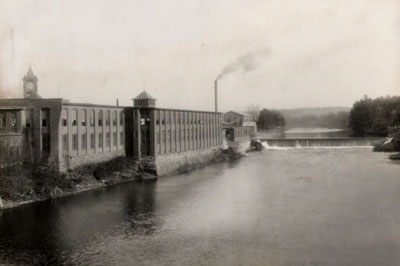
Mills Nos. 5 and 6, around 1904; photo taken from the bridge
looking up the Chicopee River (dam no longer exists)
Jute: An Account of its Growth and Manufacture
A couple of
years later, Mills number 1, 2 , and 3 were rebuilt and formed the Lower Mill
group because they were located on the lower part of the Chicopee River. Around
1900, the dam at Red Bridge and Mill number 8 were created. The Red Bridge
dam created more power for the mills.
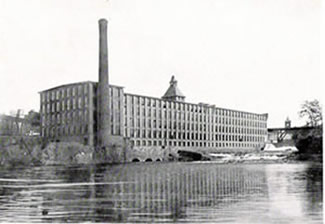
Mills Nos. 1, 2, 3; site of original Springfield Manufacturing Co. Mills
|
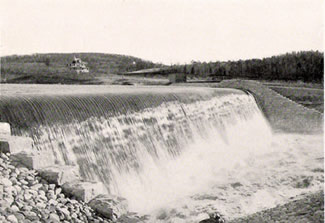
Dam at Red Bridge
|
The Service
Building was built on East Street, next to the bridge, and had a Library and
rooms for dinners and dances. In 1905, Mill number 9 was built, and in the following
two years, Mill number 10 was created. Finally, in 1913, Mill number 11
was built. Ludlow Manufacturing was the biggest company in Ludlow and the
most successful.
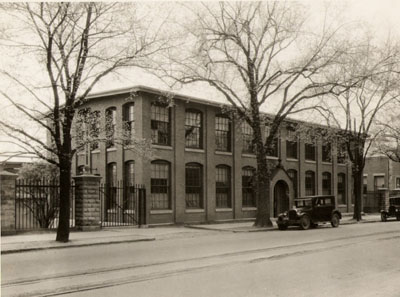
The Service Building on East Street
(site of Walgreen's parking lot today)
Looking at how many mill buildings were built in so little time, we concluded that Ludlow Manufacturing Associates was a very successful business during its first 40 years. Today, Mill numbers 8, 9, 10, and 11 are the only ones out of the original buildings that still remain.
*NEW*
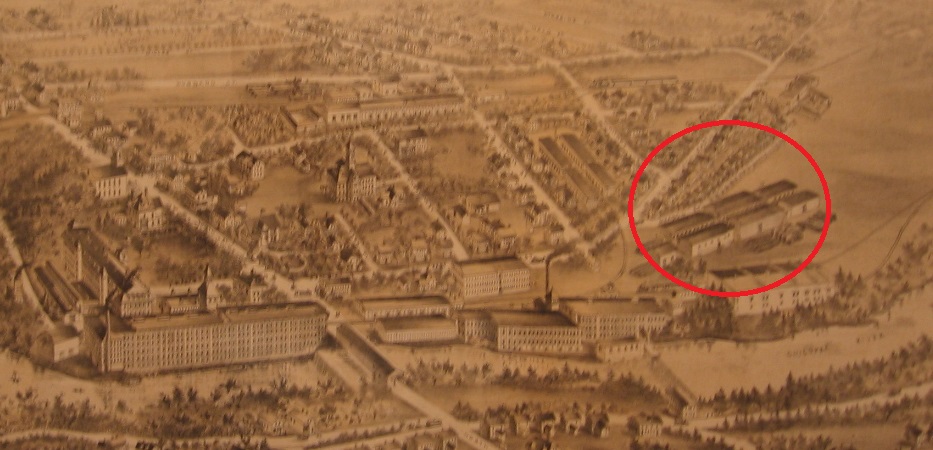
Forge where mill 8 stands now
In 1840 when the Springfield Manufacturing Company constructed a building where mill 8 stands today which forged gun barrels, for a contract with the United States Government. The forge lasted till 1848 when it was converted to manufacture textile.
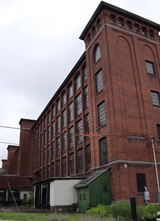
Mill 11 Outside Corner
|

Mill 11 Interior
|
Mill 11 which was built 1912 and opened in 1913 was one of the most productive mills in the entire group. Attached to mill 11 is a warehouse that is 8 stories tall and had space for raw jute and products. Mill 11 is a 5 story building containg around seven acres of floor space, with the added storage the capacity of the mills grew by 40%.
Click here to view other pictures of the mill buildings.